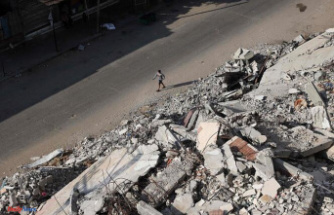A festively decorated tree is part of Christmas, even in times of crisis. The producers say there is a sufficient supply, despite the drought. The problems lie elsewhere.
Pirna (dpa / sn) - costs for energy and fertilizer, minimum wage and drought - even Christmas trees will probably be a little more expensive this year. "We assume that there will be moderate adjustments," says Renke Coordes from the Sachsenforst state enterprise. With 15,000 to 20,000 trees sold a year, he is only a small player. The state-owned company has to orient itself to the market in terms of revenue. The forest districts laid down concrete details.
"The prices should actually go up by 3 to 5 euros per piece," says producer Ulrich Kleinstäuber from Stolpen in Saxon Switzerland, assuming a range of between 8 and 50 euros. In view of the crisis, however, he wants to "leave the prices the same as last year". The horticulturist assumes that customers will either tend to buy cheap trees or do without them because of the general rise in prices.
The State Statistical Office reports a cultivation area for Christmas tree cultures outside the forest of around 600 hectares in around 100 companies in the Free State. There are no exact sales figures for Saxony. Small dusters assume up to 5000 trees per hectare.
2022 was also a challenging year for growers due to the drought. She mainly hit young plants. "That's a big problem with growth," says Coordes. Already in 2018 and 2019 there were major failures in the plantings, depending on the location. "As a result, there may also be a gap in the coming years." The needle splendor is also suffering. "The trees aren't quite as magnificent anymore." The state enterprise does not usually cut down Christmas trees in the regular forest, but cultivates them over the years on special areas.
Kleinstäuber estimates that drought-related tree stock losses for the festival have totaled 15 to 20 percent since 2018. At some locations, trees have dried up because the water-bearing layer is missing there, reports Andreas Meile from the Saxony Tree Nursery Association. Traditionally, many trees from other parts of Germany and Denmark are sold in the Free State. "The popular Nordmann fir has the best conditions there, they don't like the continental climate."
According to the Association of Natural Christmas Trees, which promotes naturally grown Christmas trees, the Sauerland is the stronghold of German Christmas tree cultivation with a cultivation area of around 12,500 hectares. About two thirds of the trees sold domestically come from there as well as from Schleswig-Holstein and Lower Saxony. Demand has been relatively constant nationwide in recent years. "Since there were hardly any late frosts and ultimately sufficient rainfall, there will be enough Christmas trees," says a spokesman.
The association estimates that 23 million to 25 million Christmas trees were sold nationwide each year. Online trade hardly plays a role here. Almost a third chose the tree from a specialist dealer, 27 percent directly from the grower, 20 percent in hardware stores and supermarkets and 16 percent in a garden center or a nursery. "The rest of the trees put up for the festival come from our own garden or change hands as gifts."












